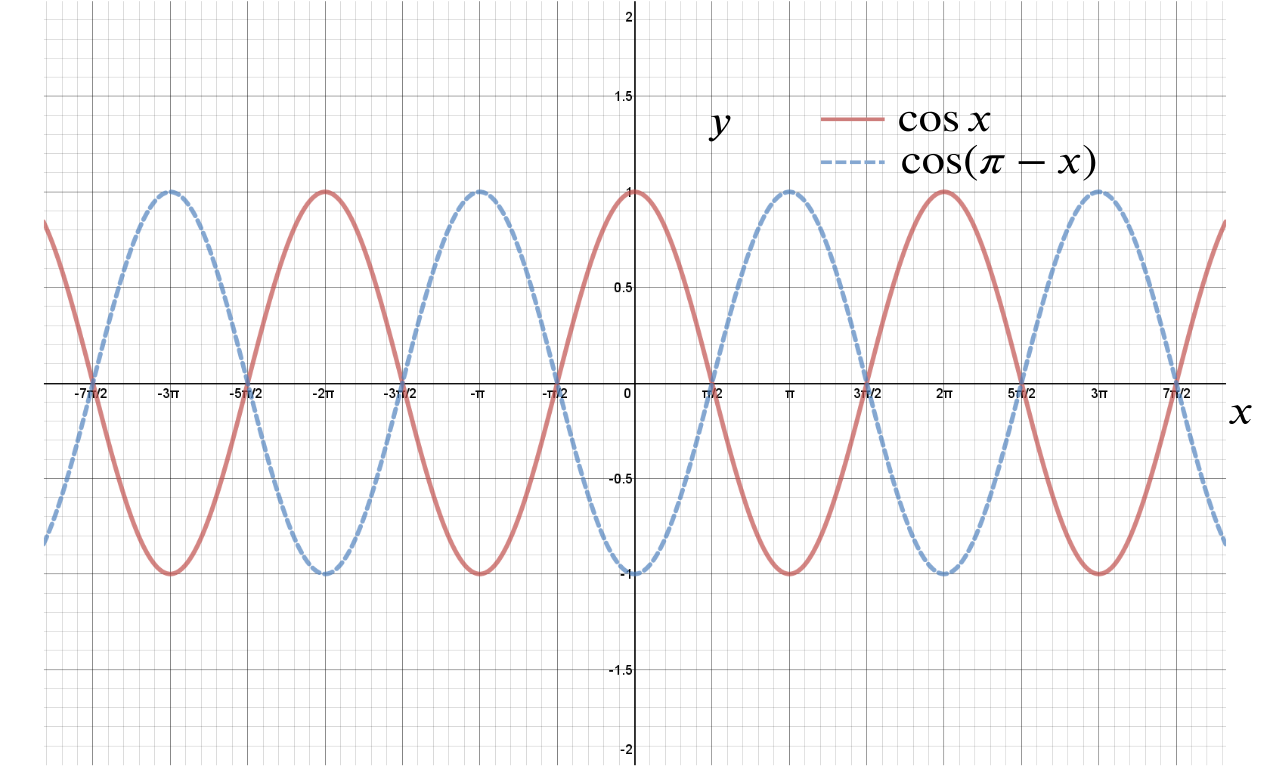\(ABCDE\) is a regular pentagon. By projecting the broken line \(AED\) on the line \(AB\), or otherwise, show that \[\cos\frac{\pi}{5}-\cos\frac{2\pi}{5}=\frac{1}{2}.\]
Method 1

The sum of angles inside a \(n\)-sided polygon is \((n-2)\pi\), so each angle inside our regular pentagon is \(\dfrac{3\pi}{5}\). For simplicity we choose each side to be of length \(1\).
Let \(D'\) and \(E'\) be the points \(D\) and \(E\) projected onto the line \(AB\) as shown. Since \(ABCDE\) is a regular pentagon, \[D'A =\frac{1}{2}.\] From the right-angled triangle \(AEE'\) we see that \[AE' =\cos\frac{2\pi}{5},\] and from the triangle \(DPE\) we find that \[D'E' = PE =\cos\frac{\pi}{5}.\] Since \[D'E' = D'A + AE',\] we get the result \[\begin{equation*} \cos\frac{\pi}{5}-\cos\frac{2\pi}{5}=\frac{1}{2}. \qquad \label{eq:star}\tag{$*$} \end{equation*}\]Method 2
The question says ‘or otherwise’, so we’re free to pick another method if we wish.

The regular pentagon is intimately connected with \(\phi\), the Golden Ratio \(= 1.61803...\), which is the positive solution to \(x^2 - x - 1 = 0\).
Using the Cosine Rule in \(ABD\) one way, \(\cos \dfrac{2\pi}{5} = \dfrac{1}{2\phi}\). Using the Cosine Rule in \(ABD\) another way, \(\cos \dfrac{\pi}{5} = \dfrac{2\phi^2-1}{2\phi^2}\).
Thus \[\cos\dfrac{\pi}{5}-\cos\dfrac{2\pi}{5} = \dfrac{2\phi^2-1}{2\phi^2}- \dfrac{1}{2\phi} = \dfrac{2\phi^2-1}{2\phi^2}- \dfrac{\phi}{2\phi^2}= \dfrac{2\phi^2-\phi-1}{2\phi^2} = \dfrac{\phi^2}{2\phi^2} = \dfrac{1}{2}.\]
Hence, or otherwise, show that \(\cos\dfrac{\pi}{5} = \dfrac{\sqrt{5}+1}{4}\).
We then use the quadratic formula to solve for \(\gamma\): we have \[\gamma = \cos\frac{\pi}{5}=\frac{2\pm\sqrt{4-4\times 4\times (-1)}}{2\times 4}=\frac{1\pm\sqrt{5}}{4}.\] We know that \(\dfrac{\pi}{5} < \dfrac{\pi}{2}\) so \(\cos\dfrac{\pi}{5}>0\) and thus we choose the positive root: \[\cos\frac{\pi}{5}=\frac{1+\sqrt{5}}{4}.\]
Show further that \(\cos\dfrac{3\pi}{5} = -\dfrac{\sqrt{5}-1}{4}\).
We use the fact that \[\cos(\pi-\theta)=-\cos\theta,\] which we can see from the diagram.

as required.

